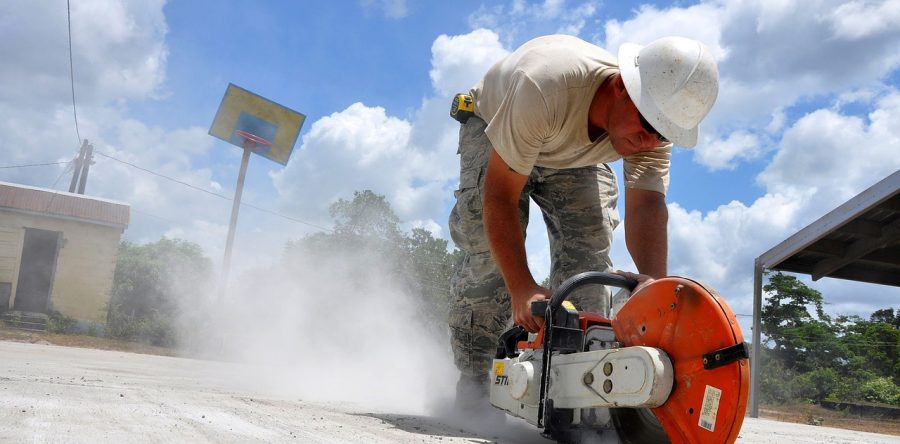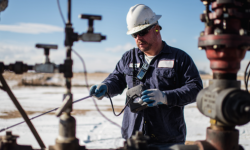Safety 2017: Seven safety leadership tips for supervisors By Emily Scace, Senior Editor, Safety. Available from <http://safety.blr.com/workplace-safety-news/safety-administration/safety-attitude/Safety-2017-Seven-safety-leadership-tips-for-super/> [June 22, 2017]
At Safety 2017, the annual professional development conference of the American Society of Safety Engineers (ASSE), Judy L. Agnew, PhD, senior vice president of safety solutions with Aubrey Daniels International, spoke to a large room filled with safety professionals in a session titled “Setting Frontline Supervisors Up for Success in Safety.”
Referring to frontline supervisors as “the linchpins of safety,” Agnew emphasized that creating a safe workplace requires active participation at all levels of the organization. Frontline supervisors, she said, play a key role in holding together the many moving parts of a safety program, from training and hazard identification to equipment inspections and recordkeeping.
In particular, Agnew contended that frontline supervisors play a key role in engaging the workforce in safety. An engaged workforce contributes to a safer workplace by participating in safety discussions, planning for and anticipating hazards, actively working to keep peers safe, reporting hazards and near misses, and challenging decisions when appropriate.
Agnew advised attendees to consider how supervisors view their role relating to safety. Do they see themselves as safety cops or safety coaches? The two mindsets produce very different engagement results. While safety cops look for problems and focus on enforcement, coaches deliver constructive feedback with a focus on helping people improve. The coaching mindset leads to more positive interactions with frontline employees, which in turn facilitates engagement.
Agnew offered the following seven safety leadership tips for supervisors:
- Build relationships. Supervisors should treat direct reports as people and get to know them on a personal level. They should focus on asking for feedback and input rather than telling subordinates what to do, and communicate in positive terms whenever possible. People feel valued when they are asked for their expertise and opinion, and this produces a more positive relationship and better engagement. In addition, supervisors can earn employees’ trust by following through on promises. Failing to do so undermines employees’ confidence in management and stifles the lines of communication.
- Relentlessly address hazards. Even in organizations with a formal hazard reporting process, employees often turn to their direct supervisors first with hazard concerns. Supervisors who address these issues promptly, take effective action, and communicate about the status of hazard fixes will have employees who more willing to participate in safety. Moreover, the speed and urgency with which hazards are remediated is often an important way that employees judge how management prioritizes safety in relation to other business objectives.
- Build critical safe habits. Supervisors should provide frequent feedback on the safety-related behaviors of their direct reports, but it’s important that they’re focusing that feedback on the behaviors that will prevent serious injuries and fatalities. Often, Agnew contended, supervisors focus on the behaviors that are easiest to observe, such as whether employees are wearing their personal protective equipment (PPE), rather than on the riskier behaviors that can be harder to spot. She recommended that safety professionals coach supervisors to recognize the conditions and activities with the highest hazard potential and prioritize the feedback they give to employees around the behaviors that contribute to those hazards.
- Conduct daily safety interactions. Frequent, short interactions about safety keep supervisors informed, allow immediate response to hazards, and provide opportunities to positively influence behavior. To be effective, safety interactions should be specific and sincere. Supervisors shouldn’t just ask a general question like “Any safety issues today?” or give a generic “Great job working safely!” as they pass employees on the floor. Rather, they should focus on a particular piece of equipment or job task relevant for the day’s work and positively recognize employees who prioritize safety.
- Respond positively to reporting. Reporting incidents and near misses leads to organizational learning and should be encouraged. If a supervisor responds negatively or focuses on disciplinary consequences when an employee reports an incident or near miss, employees will be less likely to report in the future, and hazards will go uncorrected. Rather than responding to a reported incident with a focus on finding blame, supervisors should focus on learning and prevention with responses such as, “I’m glad you told me; let’s figure out a way to improve.”
- Focus on prevention. Proactive safety management is essential at the frontline, and supervisors should hold frontline employees accountable for safety-related behaviors that prevent incidents. The focus should be on leading indicators, such as hazard reporting, rather than on lagging indicators like injury rates. A focus on lagging indicators is dangerous because it leads to an assumption that a lack of incidents equates to safety and often causes managers to prioritize a zero-injury goal over hazards that produce less frequent but more severe consequences. Many supervisors are pressured by upper management to produce certain lagging indicator outcomes, Agnew recognized, but as much as possible, supervisors should seek to immunize themselves and insulate employees from those pressures.
- Consider safety in every decision. Organizations are interconnected systems, and every decision has ripple effects. Supervisors should consider how each decision they make could directly or indirectly impact safety. Decisions such as how many people to assign to a task, when to order replacement parts, whether to work a crew overtime, and what kind of time estimate to give to management regarding completing of a project all exert pressures that influence safety, and supervisors should weigh these factors carefully.
Judy Agnew, PhD, is senior vice president of safety solutions with Aubrey Daniels International.
Safety 2017: Seven safety leadership tips for supervisors By Emily Scace, Senior Editor, Safety. Available from <http://safety.blr.com/workplace-safety-news/safety-administration/safety-attitude/Safety-2017-Seven-safety-leadership-tips-for-super/> [June 22, 2017]









